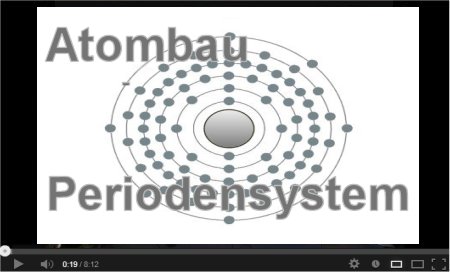|
|
|
||||||||||||||||||||||||||||||||||||||||||||||||||||||||||||||||||||||||||||||||||||||||||||||||||||||||||||||||||||||||||||||||||||||||||||||||||||||||||||||||||
| |||||||||||||||||||||||||||||||||||||||||||||||||||||||||||||||||||||||||||||||||||||||||||||||||||||||||||||||||||||||||||||||||||||||||||||||||||||||||||||||||||
|
|
A B C D E F G H I J K L M N O P Q R S T U V W X Y Z
| ||||||||||||||||||||||||||||||||||||||||||||||||||||||||||||||||||||||||||||||||||||||||||||||||||||||||||||||||||||||||||||||||||||||||||||||||||||||||||||||||||
| 1 H | 2 He | ||||||||||||||||
| 3 Li | 4 Be | 5 B | 6 C | 7 N | 8 O | 9 F | 10 Ne | ||||||||||
| 11 Na | 12 Mg | 13 Al | 14 Si | 15 P | 16 S | 17 Cl | 18 Ar | ||||||||||
| 19 K | 20 Ca | 21 Sc | 22 Ti | 23 V | 24 Cr | 25 Mn | 26 Fe | 27 Co | 28 Ni | 29 Cu | 30 Zn | 31 Ga | 32 Ge | 33 As | 34 Se | 35 Br | 36 Kr |
| 37 Rb | 38 Sr | 39 Y | 40 Zr | 41 Nb | 42 Mo | 43 Tc | 44 Ru | 45 Rh | 46 Pd | 47 Ag | 48 Cd | 49 In | 50 Sn | 51 Sb | 52 Te | 53 I | 54 Xe |
| 55 Cs | 56 Ba | 57- 71 | 72 Hf | 73 Ta | 74 W | 75 Rn | 76 Os | 77 Ir | 78 Pl | 79 Au | 80 Hg | 81 Tl | 82 Pb | 83 Bi | 84 Po | 85 At | 86 Rn |
| 87 Fr | 88 Ra | 89- 103 | 104 Rf | 105 Db | 106 Sg | Bh 108 | 108 Hs | 109 Mt | 110 Ds | 111 Rg | 112 Cn | 113 Uut | 114 Fl | 115 Uup | 116 Lv | 117 Uus | 118 Uuo |
| 57 La | 58 Ce | 59 Pr | 60 Nd | 61 Pm | 62 Sm | 63 Eu | 64 Gd | 65 Tb | 66 Dy | 67 Ho | 68 Er | 69 Tm | 70 Yb | 71 Lu |
| 89 Ac | 90 Th | 91 Pa | 92 U | 93 Np | 94 Pu | 95 Am | 96 Cm | 97 Bk | 98 Cf | 99 Es | 100 Fm | 101 Md | 102 No | 103 Lr |
The order in the world had been decoded, at least up to the atomic level it had been. The two Greeks, Leucippus and Democritus, coined the phrase approx. 500 years BC. They were assuming that all materials are can be divided up to a certain point, then no further. However‚ the 'indivisible' is indeed divisible. Nevertheless, it's astonishing, that this construct (in the philosophy of science) could hold up for as long as it has, and that it will continue to hold up.
Over one hundred years ago, significant new knowledge had been gained in this field. However, one was still working with models. Only a good ten years ago, was one able to make the atomic structures visible by using the STM (Scanning Tunnel Microscope). Primarily, one worked with models that were just complex enough, that they could answer certain questions.
What was important, as the grounds for the above periodic table of the elements, is the knowledge of a nuclear core and the electrons circling it, whereby, the enormous difference between the atom and the core was continuously being pointed out, e.g., by comparing a football stadium to a grain of rice. The core contains at least one positively charged proton, e.g. in Hydrogen, and electrically neutral particles, called neutrons, indeed, not the Hydrogen.
The reason why the electrons circle the core, can be accounted for by their negative charge. Why however, they don't, at some point, fall into the core, is a question of quantum physics, which also has to do with the classification of the electrons, e.g., whether a mass is assigned to them or not. This is of no consequence for our explanation of the above shown table. What we'll try to explain, is how the materials of this world are made up of atoms.
| Number of protons -> Ordinal number |
The above table, called the periodic table of the elements is, at first sight, ordered according to number of protons in the core. It starts at the top left, with the comparatively simply built up Hydrogen (1 proton). The large gap to the next one, which is Helium (2 protons), is explained by the fact that in the table there are also a number of other common characteristics of various elements. Whatever the case may be, the table ends with Ununoctium (118 protons).
The periodic table of the elements was discovered by Professor Mendelejew in 1869. Because the nuclear models originate from a later period, Mendelejew, in the laboratory in his study, had to assume the relative atomic weight. How was he able to determine this?
At that time, atoms and molecules were known. Thus also the composition of molecules. Perhaps an example of this: If one knows, that a water-molecule is made up of two Hydrogen atoms and one Oxygen atom (H2O), all one needs to do, is to repeat the attempts to obtain water so often, until neither Hydrogen nor Oxygen remains. The weighing, particularly before the last attempt, allows the relative allocation of both atomic weights.
Indeed, at that time a small problem did arise. What the scientists never knew about yet, was that belonging to a material, are also atoms which have a slightly differing number of neutrons. These are also called material isotopes. Thus, e.g., slightly heavier atoms are found in natural Oxygen and in Carbon, which can corrupt the results. Not only for this reason, are different measurement methods normal nowadays . One also speaks of the atomic mass in the comparative measuring.
At that time, only 63 of the 90 natural elements were known. Just how rapid the following develpments were, is shown by the fact that 30 years earlier, only 53 elements were known. Another interesting point e.g., is that because of Mendelejew's classification into seven groups, gaps were created for elements, whose properties he could already forecast. Three of those were even found while he was still alive. 03/13
Atoms and the Periodic Table (English language)

| Next page |
2001-2015 Copyright programs, texts, animations, pictures: H. Huppertz - E-Mail
Translator: Don Leslie - Email: lesdon@t-online.de

